Punjab is a land of exuberant celebrations, lush green fields, delectable cuisine, and foot-tapping Bhangra. But there is more. Songs? Yes. Glamorous cars, eye-candy models, luxury brands, white skin colour obsession, a few Pakistani city names, and of course the rightful bashing of the gold-digger girlfriend in the end. While a Punjabi reading this opening will be well within his right to mistake this piece for another straw riding the Udta Punjab wave, and very frankly, we don’t mind. While the movie painted the state of Punjab in a bad light, its slowly fading remnants still negatively stereotype a culture whose vibrancy extends beyond Burrruh. We are here to leave some facts about Punjab and present the glaring contradiction between the lively image and the grim reality of the beings that call themselves Punjabis.
Punjab is the home of approximately 1.6 crore Sikhs and 1.0 crore Hindus [2011 Census]. When considering population growth rates, the Hindu population is expanding rapidly compared to the Sikh population. This figure will come in handy in the later discourse where the absence of this data could have invoked a turbanised version of a Punjabi. It is, therefore, imperative to dissect the blogs into Sikh and Hindu Punjabis.
THE SIKHS
Contemporary media is filled with Sikhs, trying so hard to present a Hindu-free identity. An identity, where it were always the brave Sikhs who came to rescue the Hindus.
Here are a couple of examples:
I wish Sikhs of the past did not give up their lives for saving your forefathers. We would’ve been excused from the torture of dealing with scums like you today. https://t.co/1XB8tbfKDE
— Jas Oberoi | ਜੱਸ ਓਬਰੌਏ (@iJasOberoi) March 21, 2023
To cover the entirety of Sikh history is beyond the scope of this piece. Nevertheless, let’s quickly glance at a few key points.
- Origin: Sikhism was founded by Guru Nanak in the 15th century in Punjab, India.
- Titles: Kaur (princess) for women and Singh (lion) for men were introduced by Guru Gobind Singh to promote equality.
- Word Origins: All three words have Sanskrit roots—Sikh comes from “shishya” (learner), while Kaur and Singh derive from “kumari” (princess) and “simha” (lion), respectively.
It’s a no brainer that the ‘lohe ke kade’ of the supposedly valiant Sikh warriors described in the video above has found a better use of resting on steering wheels of Ubers, but one needs to understand the gravity of such campaigns of glorification on the cost of Hindu bashing. This perspective has led to attempts to both highlight the bravery of Sikhs and downplay the courage of Hindu Khatris. Let’s examine some key historical figures and events to gain a better understanding of this narrative.
Today’s Sikhism significantly differs from its original conception. The first four Sikh Gurus were primarily spiritual, while the later Gurus engaged in battles against the Mughals for various reasons.
Guru Nanak Dev Ji (1469-1539): The founder of Sikhism, Guru Nanak Dev Ji, emphasized the importance of spiritual growth, honest living, and the equality of all people. He travelled extensively to spread his teachings and engaged in interfaith dialogue.
Guru Angad Dev Ji (1504-1552): The second Guru, Guru Angad Dev Ji, contributed to the spiritual aspects of Sikhism by promoting the Gurmukhi script and compiling Guru Nanak Dev Ji’s teachings, laying the foundation for the Guru Granth Sahib, the holy scripture of Sikhism.
Guru Amar Das Ji (1479-1574): Guru Amar Das Ji, the third Guru, focused on social reform and introduced the concept of langar, the community kitchen, which emphasized the importance of equality and serving others.
Guru Ram Das Ji (1534-1581): The fourth Guru, Guru Ram Das Ji, established the city of Amritsar and continued the spiritual and social teachings of his predecessors. He composed hymns and expanded the Sikh community, emphasizing the importance of service, humility, and devotion to God.
However, as the Sikh community grew, it faced persecution and conflict with the Mughal Empire. The later Gurus adopted a more assertive stance, emphasizing the need for Sikhs to protect themselves from oppression:
Guru Arjan Dev Ji (1563-1606): The fifth Guru, Guru Arjan Dev Ji, compiled the Adi Granth, the precursor to the Guru Granth Sahib. He was executed by the Mughal emperor Jahangir, marking the beginning of the Sikh struggle against Mughal persecution.
Guru Hargobind Ji (1595-1644): The sixth Guru, Guru Hargobind Ji, adopted the concept of Miri-Piri (temporal and spiritual authority) and established the Akal Takht. He organized a standing army to defend the Sikh community and engaged in several battles with Mughal forces.
Guru Har Rai Ji (1630-1661): The seventh Guru, Guru Har Rai Ji, maintained a small army for defensive purposes but focused primarily on spiritual matters and healing.
Guru Har Krishan Ji (1656-1664): The eighth Guru, Guru Har Krishan Ji, was a spiritual leader who focused on helping the sick and the poor. His tenure as Guru was short, as he passed away at the age of 7 due to smallpox.
Guru Tegh Bahadur Ji (1621-1675): The ninth Guru, Guru Tegh Bahadur Ji, travelled extensively to preach Sikhism and provide spiritual guidance. He was executed by the Mughal emperor Aurangzeb for refusing to convert to Islam, further fueling the Sikh struggle against Mughal oppression.
Guru Gobind Singh Ji (1666-1708): The tenth Guru, Guru Gobind Singh Ji, established the Khalsa, a community of baptized Sikhs, and introduced the Five Ks as symbols of Sikh identity. He fought several battles against Mughal forces and regional kingdoms to protect the Sikh community and uphold the principles of justice and righteousness. Before his death, Guru Gobind Singh Ji passed on the spiritual authority to the Guru Granth Sahib, the Sikh holy scripture, declaring it the eternal Guru for the Sikh community.
The Hindu Connection
The annals of Indian history is abound with instances of interfaith solidarity and camaraderie, where Hindus have stood by Sikhs in times of need. Amidst the recent surge in narratives lauding the valour of Sikhs in saving Hindus, it is imperative to remember and honour the countless stories of Hindus extending a helping hand to their Sikh brethren in their time of need.
Roots:
A person without knowledge of their past history, origin and culture is like a tree without roots.
Marcus Mosiah Garvey Jr.
- Guru Nanak, the founder of Sikhism, was born to Kaluchand and Sulakshana Devi, who were Khatri Hindus.
- Before his death, Guru Nanak nominated Guru Angad, a Kshatriya Hindu, as his successor.
- Guru Angad decided to modify the Lande (without tails) alphabet, a Brahmi-derived script, to create a new script called Gurumukhi, which is now used by Punjabis.
- Guru Angad also nominated a Kshatriya Hindu as his successor, establishing the hereditary nature of the Sikh Gurudom.
- According to the Sikhan di Bhagat Ratan Mala, written in the 17th century, Guru Hargobind, the sixth Sikh Guru, was taught Shastravidya (the science of weapons) by two Rajput Hindus named Rao Sigara and Rao Jaita.
- Guru Gobind Singh, the tenth and last Sikh Guru, was also taught Shastravidya by a Rajput Hindu named Rao Bajjar Singh Rathore, who was the great-grandson of Rao Mandan Ji Rathore.
- Later, Guru Gobind Singh’s children were taught by Rai Alam Singh Chauhan, who is still considered one of the finest generals to have ever led Sikhs.
Hindus to the rescue
- Raja Kalyan Chand: He gifted the land of Kiratpur to Guru Hargobind Singh’s son Gurditta. When Mughal Emperor Jahangir learned of the close relationship between Raja and Guru, he demanded that the Raja expel the Guru from the hill state of Kehloor. However, the Raja defied the emperor’s request and instead moved his capital from Kot-Kahlur to Sunhani (Bilaspur).[History of Bilaspur]
2. Bhai Singha Purohit: When Mughal commander Mukhlis Khan under orders from Shah Jahan, attacked Amritsar, Guru Hargobind decided to run from the Amritsar city complex. The escape was made in such haste that he forgot to take his own daughter Bibi Vro. The city was devoid of Sikhs and Mughal army was roaming in the city. At this point, Guru Hargobind asked Bhai Singha Purohit to rescue his daughter. Belonging to a Brahmin Purohit family, he was the commander in the army of Guru Hargobind. He managed an almost impossible rescue of Bibi Vro. Later, he faced the Mughal army head-on.
Im Mare Maar Singhe Nihaar. Lalkaar Paryo Jeh Bal Udaar. Bal Bipra Guru Prodha Subhat. Tab Bhayo Samukh Maare Ulat.
Raas 6, Ansu 10, Page 2827
Meaning: When he saw Sikhs being killed there, he, who had too much power, started to challenge (the enemy). Then, the powerful Brahmin, who was Guru’s Purohit and a warrior, came in front (of the enemy) and killed them.
Bhai Singha’s battle prowess created chaos in the Mughal camp, as they were unable to withstand the deadly arrows he unleashed. Ultimately, the Mughals were forced to flee the scene.
3. Raja Jai Singh: Guru Har Rai excommunicated his eldest son Ram Rai from becoming the next Guru. It was because Ram Rai changed some verses of Adi Granth to please Aurangzeb. So, when Guru Har Krishan was made the next Guru, Ram Rai sent a petition to Aurangzeb, claiming that he had been deprived of his birthright. Aurangzeb summoned Guru Har Kishan to Delhi to explain his position. Raja Jai Singh, a Rajput king in Aurangzeb’s court, feared that Guru Har Krishan’s refusal to come to Delhi could trigger an attack on the Sikhs by Aurangzeb. To prevent this, he personally requested permission from the emperor to bring the Guru back to Delhi from Kiratpur.
Guru Har Kishan was very young and was afraid to go to Delhi.
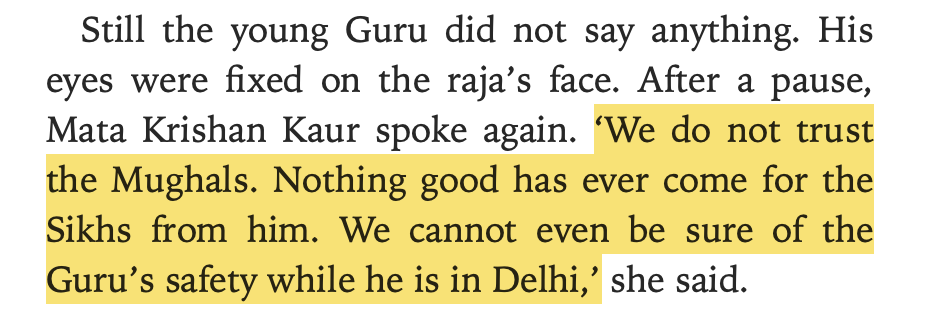
Then, Raja Jai Singh gave his word that he would protect the young Guru and will bring him back to safety.
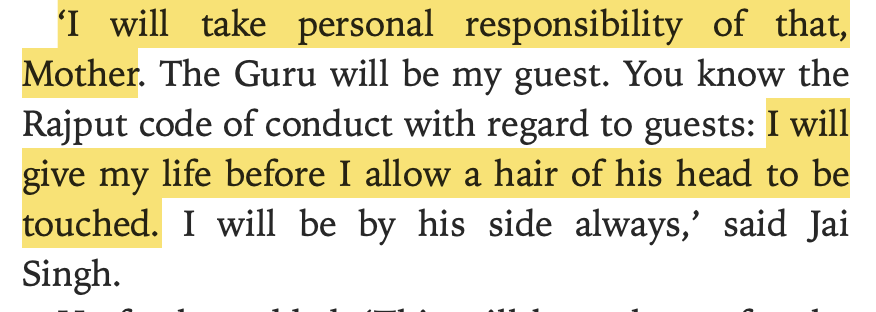

He convinced Aurangzeb not to give the Guru title to Ram Rai.
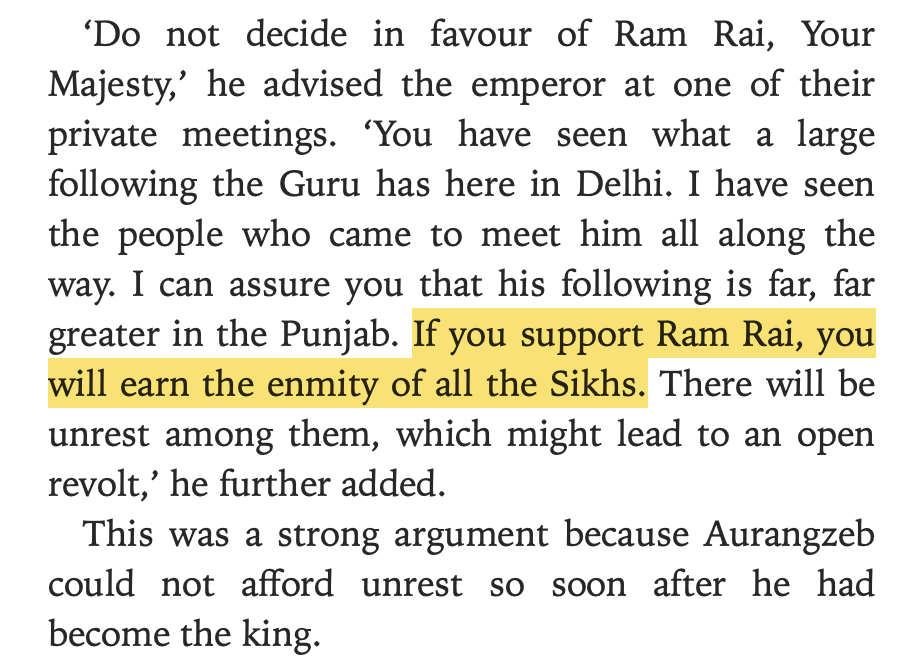
He also gave the young Guru his own Bungalow to stay in Delhi. The site is now home to the magnificent Gurdwara Bangla Sahib.
4. Prince Ram Singh: The Hindu prince, Ram Singh, son of Raja Jai Singh, strongly pleaded with Aurangzeb to rescind his order of executing Guru Tegh Bahadur and secured his release from confinement after two months and three days.
4. Sawai Jai Singh: He protected Guru Gobind Singh Ji’s family after their house in Delhi was sacked, providing them with a safe haven in Mathura and a generous allowance.
some Ugly Truths
Gobind Singh, only fought the Mughal army when he was forced to, and it was hardly to protect Hinduism.
Dr Koenraad Elst
- The vandalisation of Naina Devi Temple- After the battle of Kartarpur, Guru Hargobind moved to Phagwara and then to Kiratpur in the Punjab hills. This region was controlled by Raja Tarachand, who did not show allegiance to King Shahjahan. Naina Devi was a temple dedicated to the goddess which was situated on top of the mountain and people from the surrounding areas used to make pilgrimages to it. One of Guru Hargobind’s Sikh followers, Bhairo, went to the temple and broke the nose of the goddess idol. This act was seen as an expression of the Sikh rejection of idol worship. He then goes on to mock this act.
- Backstabbing of Banda Bahadur- Sikhs often sidelined and slipped under the carpet, the contributions of Hindus. And those who couldn’t be ignored got misappropriated. Banda Bahadur, a Hindu Rajput who created the first Sikh state is villainised in the Sikh texts as a slaughterer of Sikhs when in reality, he was only returning the favour to Sikhs for throwing slaughtered animals in his ashram to mock his vegetarianism and religious beliefs as a Vairagi Vaishno.
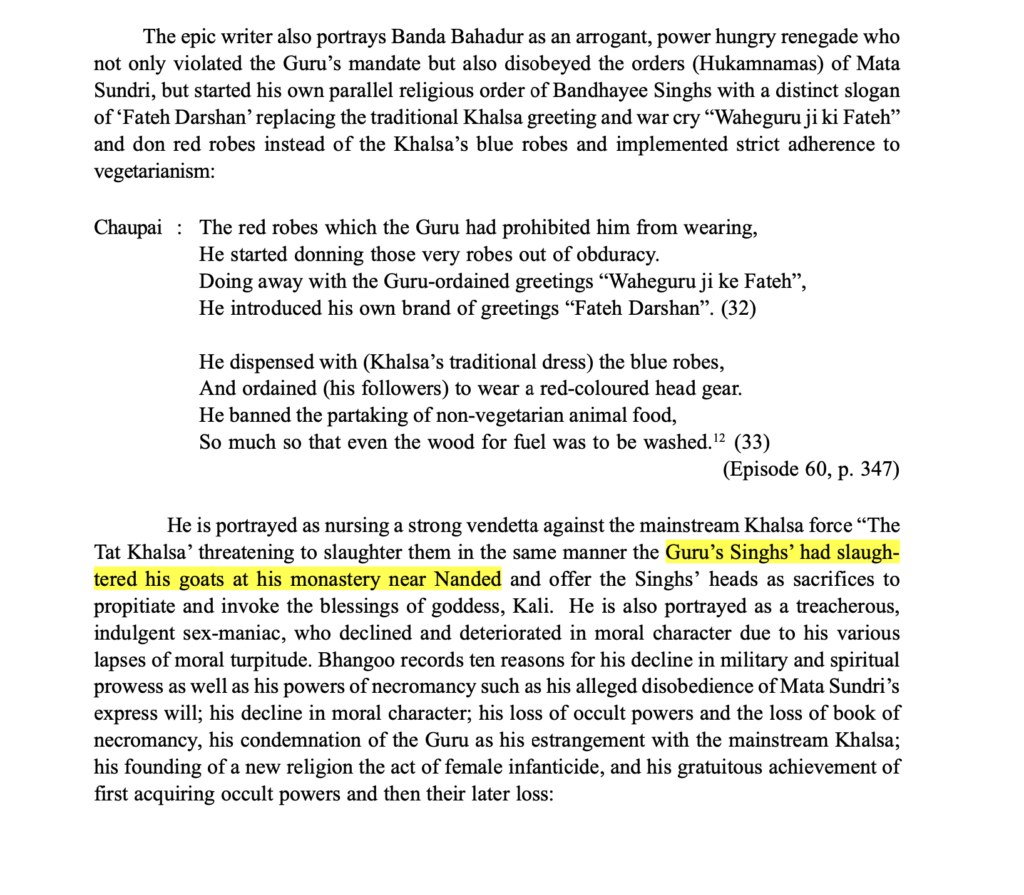
- Guru Gobind’s boot-licking- According to Guru Gobind Singh’s confession in the Zafarnama, a letter he wrote to the Mughal ruler Aurangzeb, he referred to himself as an ‘idol-breaker’ in a complex mix of puffery and pleasing language.
I vanquished the vicious hill chiefs, they were idol-worshippers and I am idol-breaker.
Verse 95, Zafarnama by Guru Gobind Singh
- Slaughter of Hindus in Kumbh Mela- In April 1796, a massive Kumbh Mela in Haridwar was organised where around 25 lakh people were gathered. On the last day of the event, a Sikh group belonging to Patiala’s Raja Sahib Singh launched violent attacks on devotees killing 5000 Hindus.
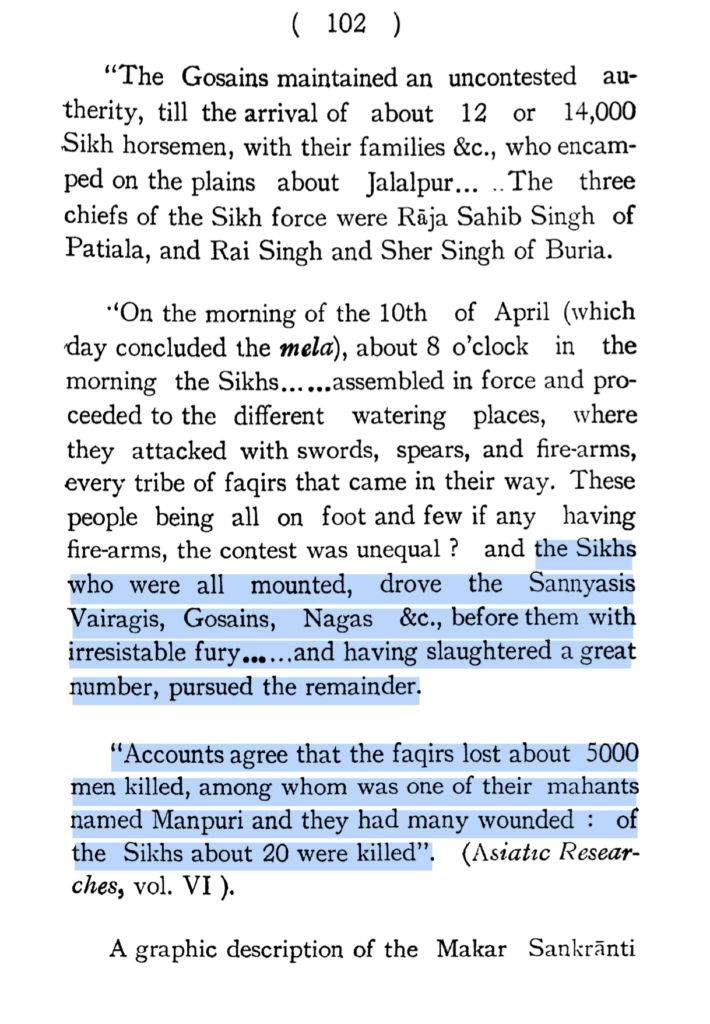
- Kashmir under Sikhs- During the Sikh rule, the Kashmiris were subjected to inhumane treatment, including forced labour, extortion, and brutal suppression of dissent, which significantly deteriorated their living conditions, caused loss of civil liberties, and widespread suffering.
Not a day passed whilst I was on the path to Kashmir, and even when travelling in the valley, that I did not see the bleached remains of some unfortunate wretch who had fallen a victim either to sickness or starvation.
Godfrey Vigne , Travels in Kashmir, Ladakh, Iskardo, 1842, Vol. I Page 257
The murder of the natives by a Sikh was punished with a monetary fine.
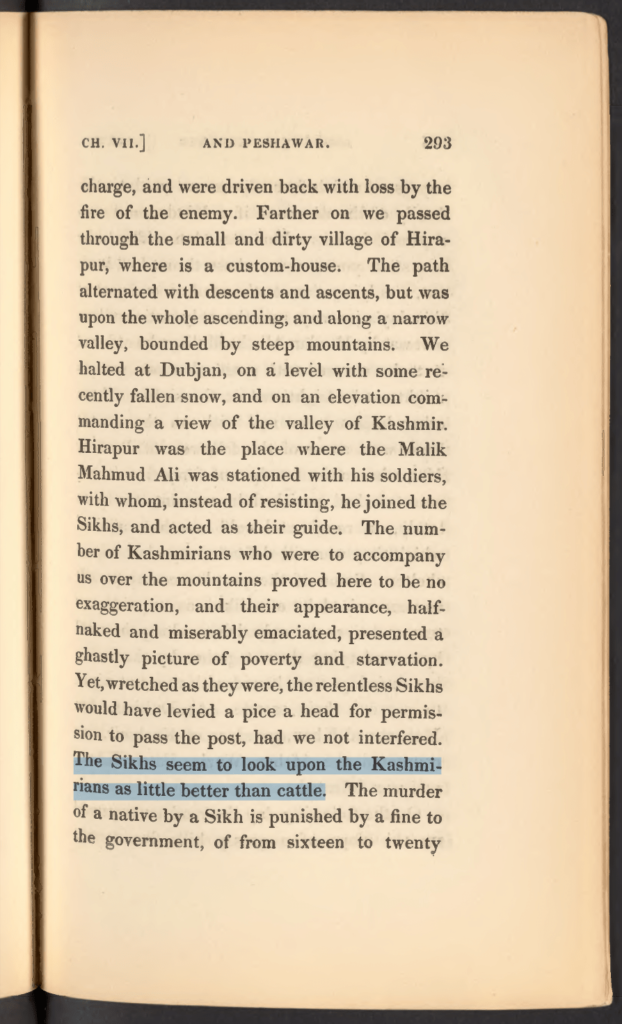
In Cashmere, there is scarcely more chance of getting a supper for him who tills, spins or rows all day, than for him who, being rendered desperate, sleeps all day under the shade of a plane-tree. A few thousand stupid and brutal Sikhs, with swords at their sides, or pistols in their belts, drive this ingenious and numerous, but timid people, like a flock of sheep.
Victor Jacquemont (French Botanist), Correspondence inédite, May 16, 1831
While there is a popular belief that Sikhs have always protected Hindus, we just showed you the history that tells a different story. The Sikhs were never the champions of Hindus. Rather, they have often acted in their own self-interest, which has sometimes led to their participation in violent conflicts against Hindus. The Sikhism that we know today is a colonial construct.
In the process of projecting themselves as a legitimate body in the public sphere governed by British law, the earlier principle of heteronomic sovereignty was overlain, and to some extent displaced, by modernist principle of autonomic sovereignty which was essential for converting the Panth into a nationalized community (or qaum) characterized by the notion of a people with its proper religion (Sikhism), their own language (Punjabi) and a geographical territory or homeland they could call their own (Punjab).
Sikhism: A Guide for the Perplexed by Arvind-Pal Singh Mandair
We suggest that it would be a good time to recollect what has been put down in this piece till now. Remember, we present this piece as a dissection of Punjabis into Sikhs and Hindus. While the above history lesson might have been in favour of the Hindus, we intend to paint no such picture. We leave our readers with Sanely Written’s assurance, their time will come i.e. history will come for them.
History of the Modern Problem
First, let us look at Punjab before the partition of India. The rich canal colony that once hosted the Indus Valley Civilisation where Vedic chants reverberated in Sanskrit was systematically stripped of its posterity and its very language.
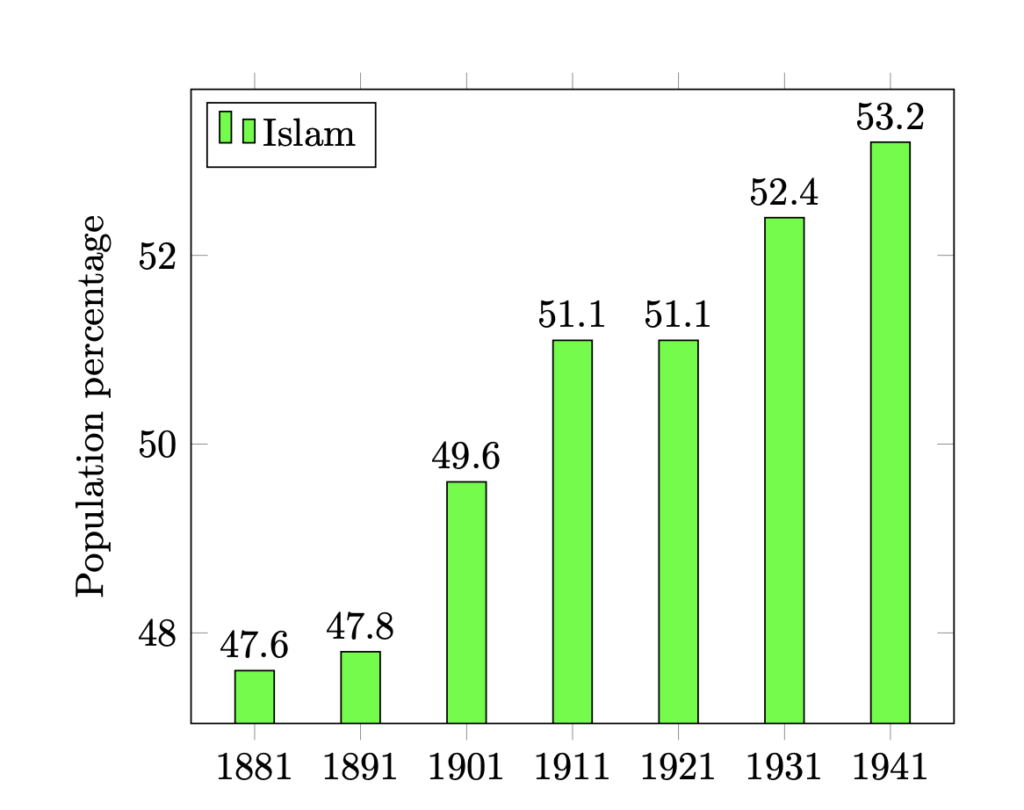
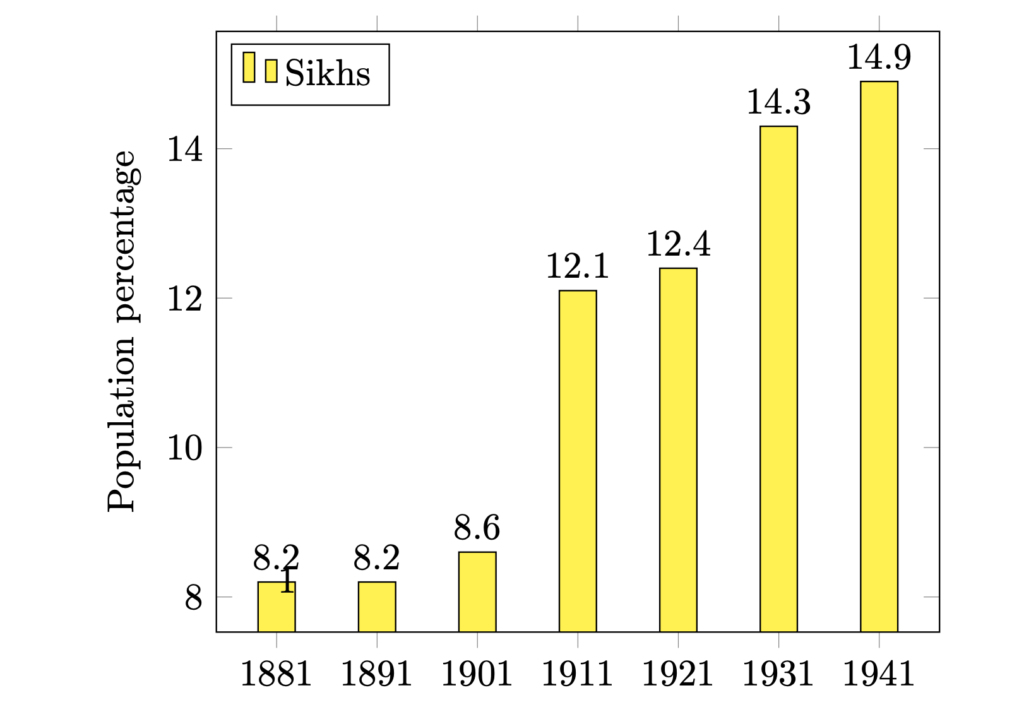
The number of Sikhs and Muslims in Punjab grew in Punjab at the expense of? You guessed it! Hindus. The decline in the Hindu population has been largely attributed to the unfortunate conversion of Hindus to Sikhism, Islam, and Christianity, as documented in various sources. [Demography of Punjab by Gopal Krishan]
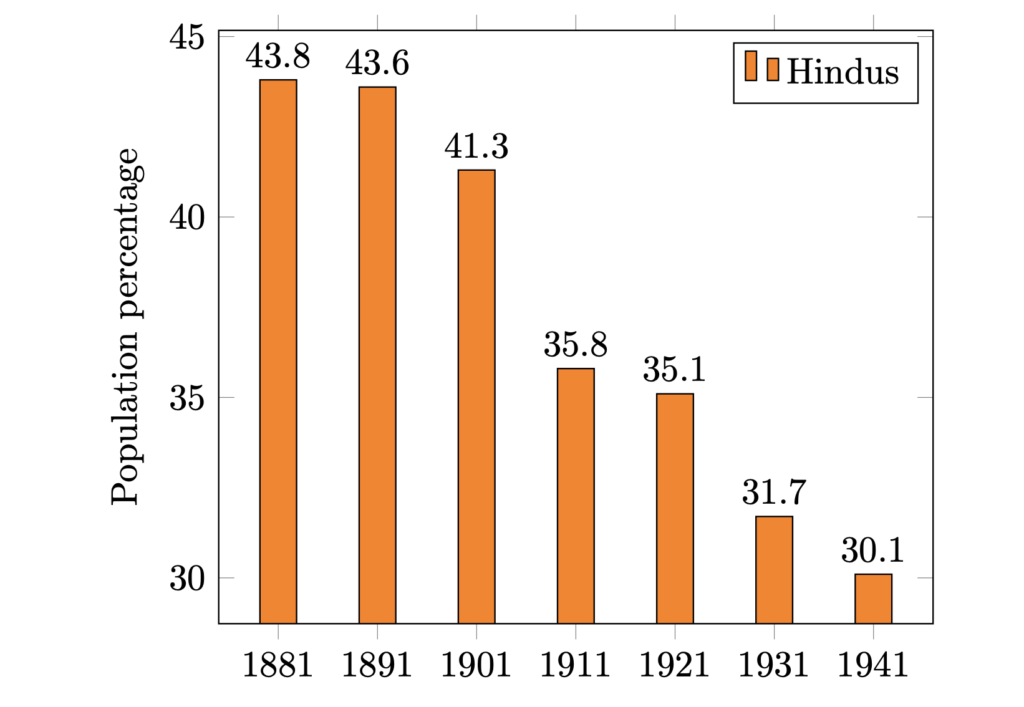
An attempt at restoration- Swami Dayanand Saraswati, a luminary figure of unparalleled intellect, determination, and devotion to the upliftment of Indian society, was a remarkable philosopher, social reformer, and the founder of Arya Samaj, who took up this task of restoring the Hindi language in Punjab. In 1877, Dayanand Saraswati visited Punjab and delivered a series of lectures on the importance of Hindi. He argued that Hindi was the true language of the people and that it should be used in all official and educational contexts. His message resonated with many Punjabis (mostly Hindus). His efforts paid off, and by the turn of the century, Hindi had become one of the dominant languages in Punjab. This, of course, irked the Sikhs.
This anger grew among the Sikhs, Muslims and Hindus who began calling their Hindi-speaking brothers revisionists. Quite an irony from a Punjabi speaker who himself gave up Hindi to pick up the new and seemingly fancy ‘Assi-Tussi’. Well, the anger reflected in the elections of local self-governing bodies. The long history of such elections being contested on a communal basis further accentuated the differences between the Hindi-speaking Hindus and others. To emphasize their independent political identities, these communities claimed a separate cultural heritage, the sheet anchor being their mother tongue.
But it is to be observed from the above graphs that Sikhs were still only around 15% in the 1930s. During the 1931 census, while the Hindus recorded Hindi as their mother tongue and the Muslims Urdu, the Sikhs, pompously championed the cause of Punjabi alongside the loyalist Hindus. The Sikh’s attachment to it was attributed to the mistaken belief that Punjabi was the language of their scriptures and for the Hindus, it was boot-licking. But we are discussing Sikhs. Therefore we shall discuss the habit of boot-licking Hindu Punjabis later in our blog. We also state for the record that the distinction between being a Hindu or a Sikh has not been as clear in the past as it is today.


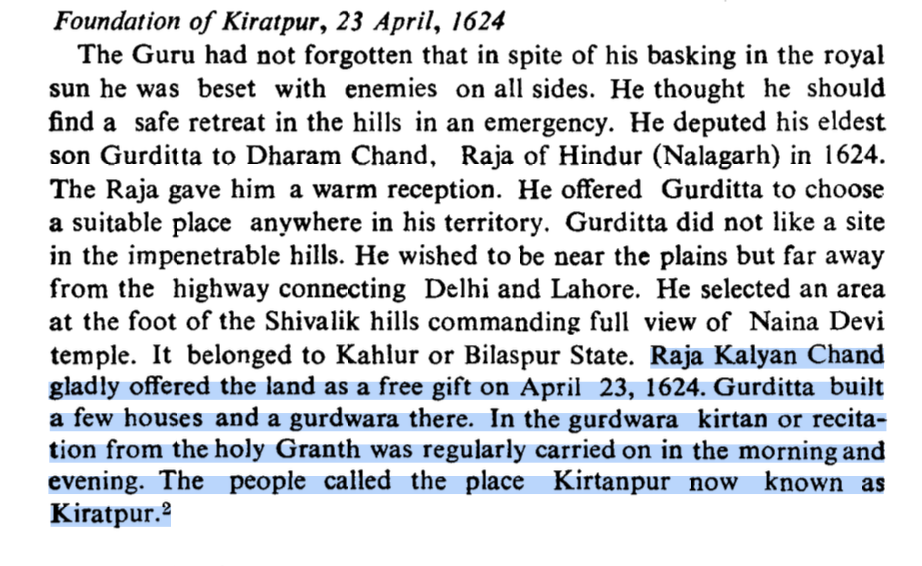
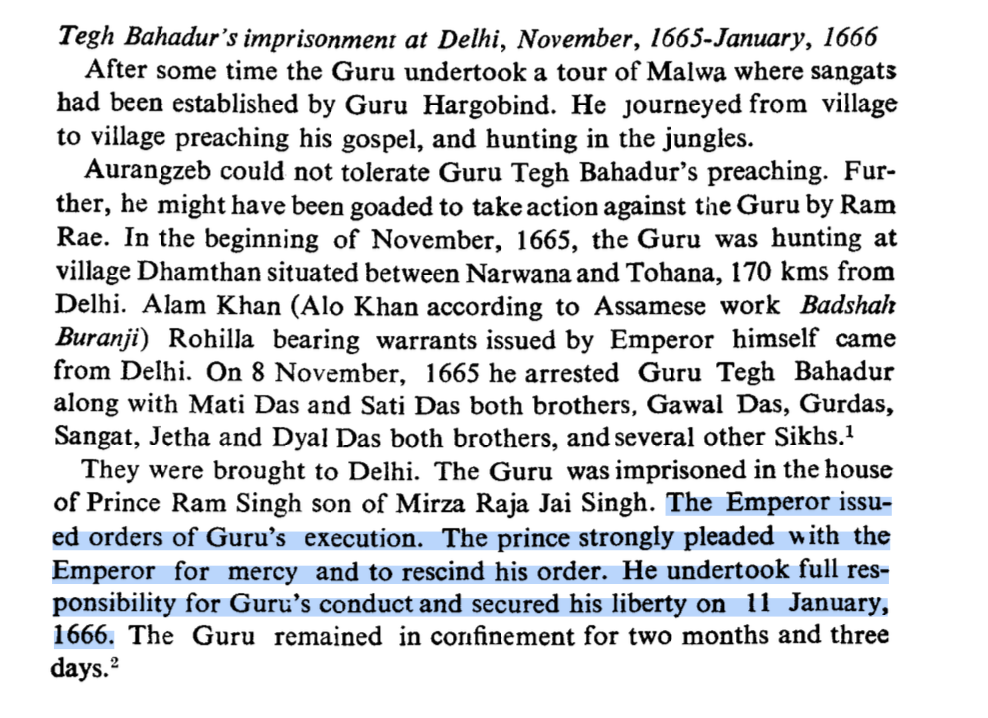
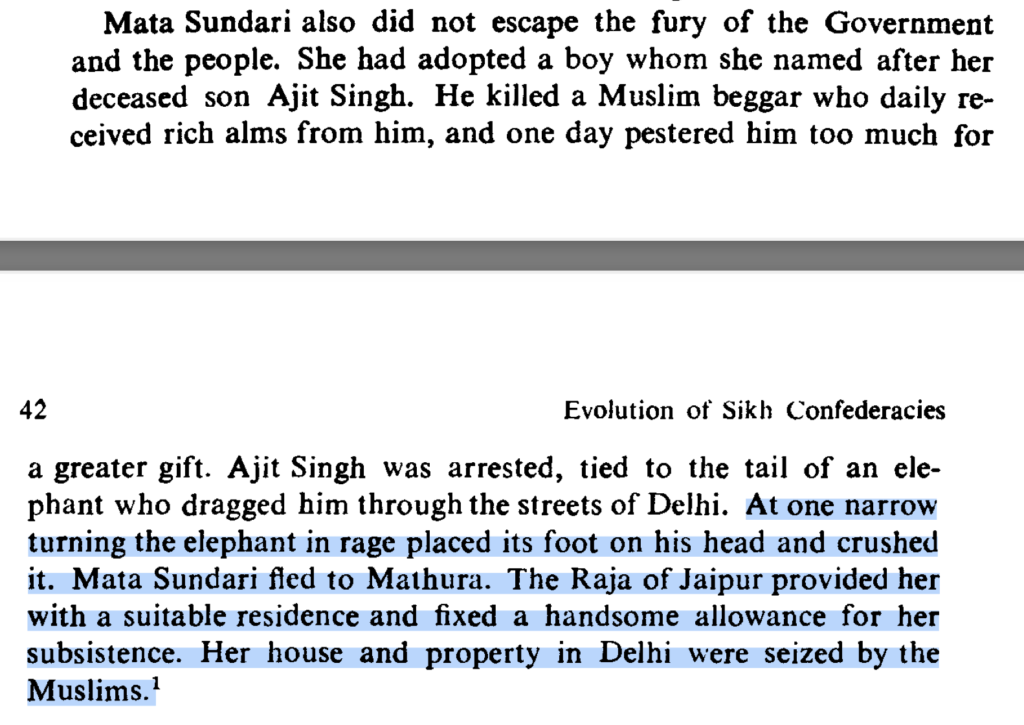
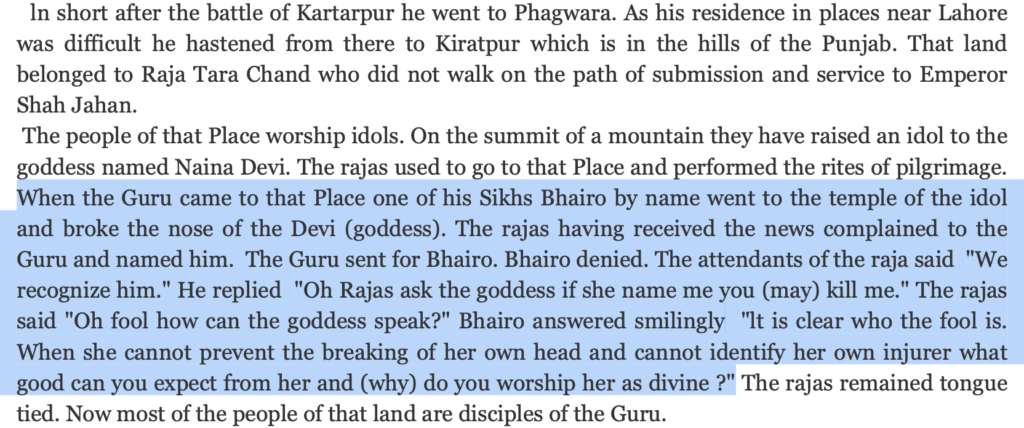
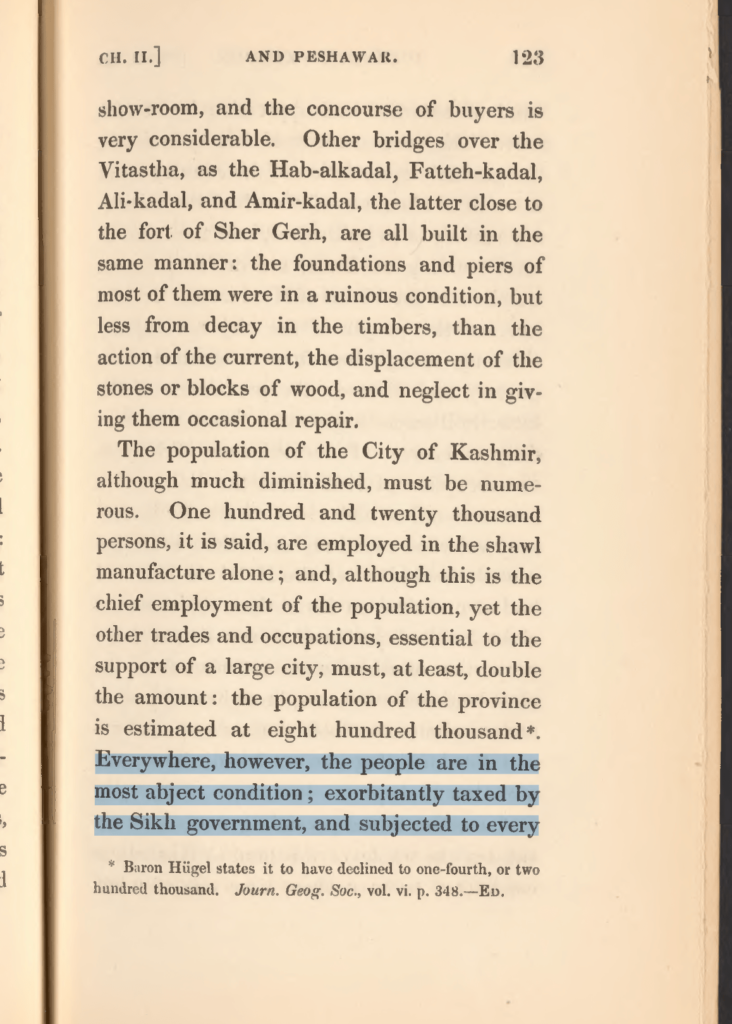
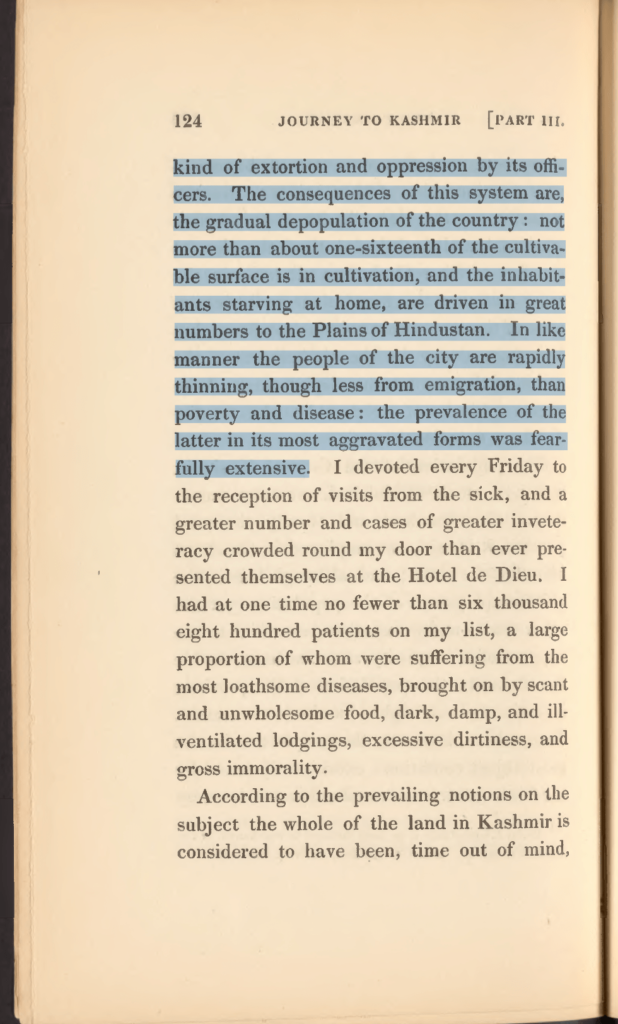


4 replies on “The Punjab Problem: Listening beyond Burrrruh : Part 1”
👍👍
what a piece 🙏🙏
i have bookmarked this page because everytime there is a discussion among friends, i am told that Sikh protected Hindus and were the warrior class who have made the highest sacrifice for India and the Sikh try to separate themselves from Hindus.
👍🏻